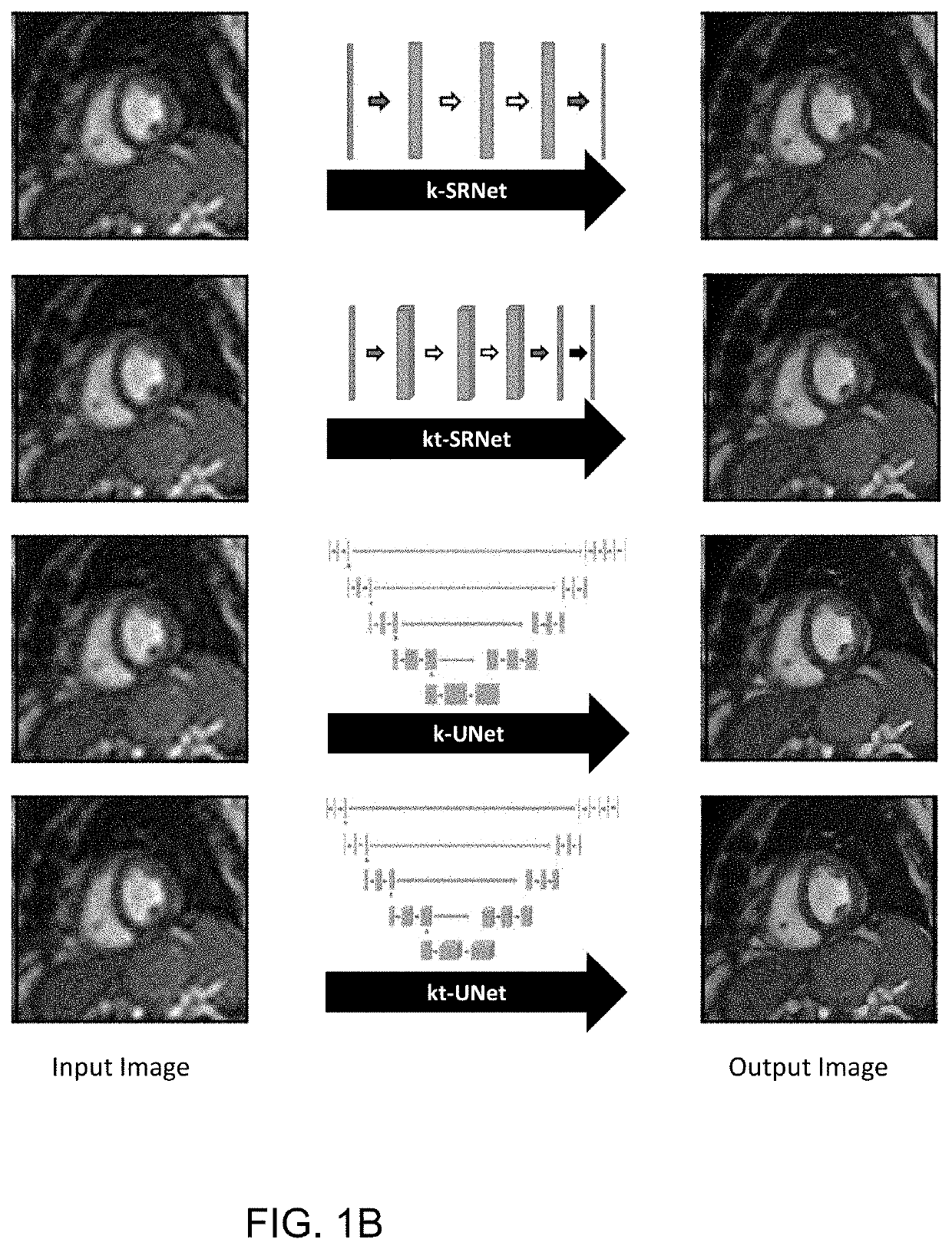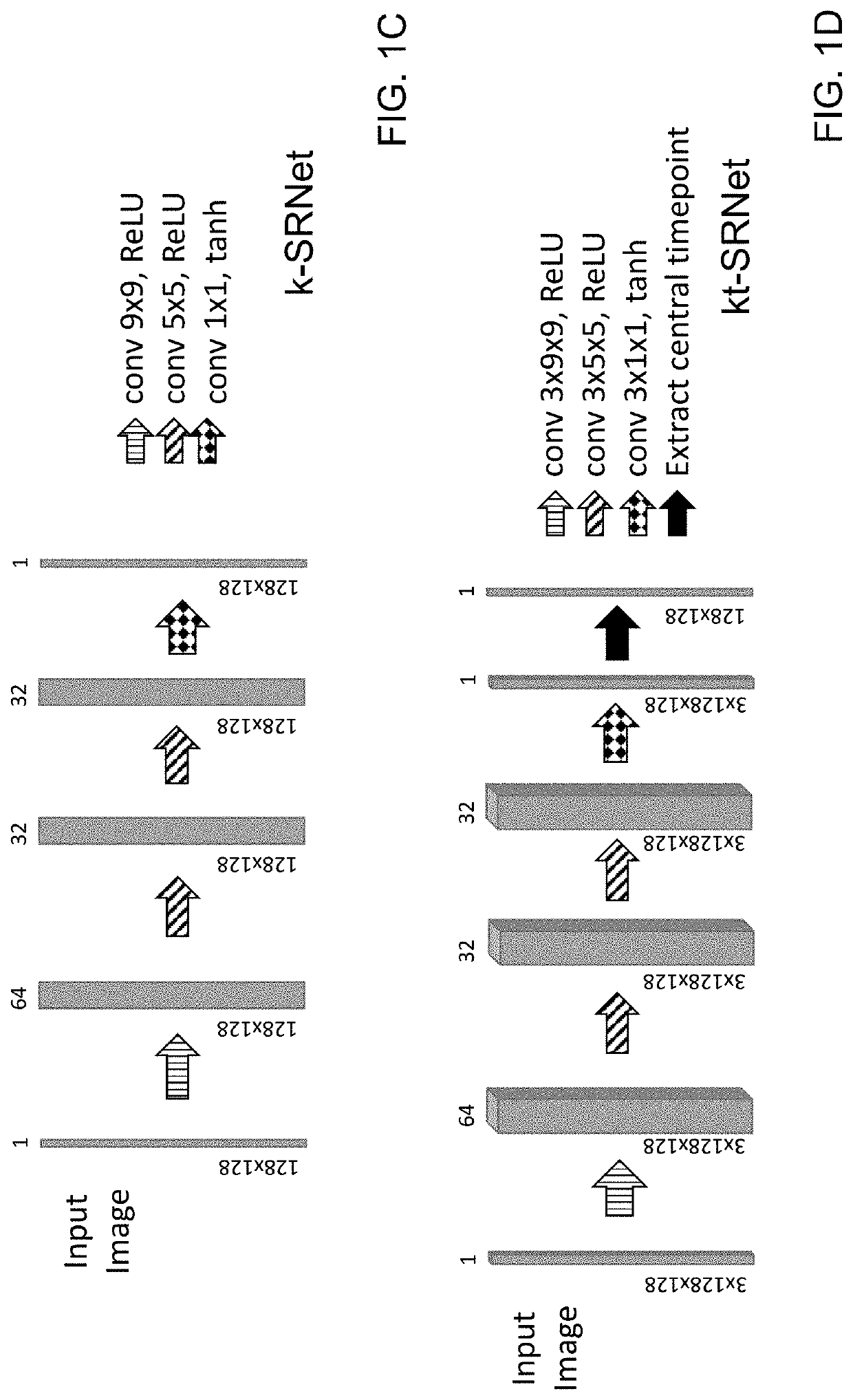Spatiotemporal resolution enhancement of biomedical images
a biomedical image and spatiotemporal resolution technology, applied in the field of deep learning methods, can solve the problems of image detail loss, algorithm clearly outperforms traditional image interpolation strategies (i.e., cubic interpolation), and cannot incorporate knowledge across time domains, so as to improve anatomic detail, reduce scan time, and preserve anatomic detail
- Summary
- Abstract
- Description
- Claims
- Application Information
AI Technical Summary
Benefits of technology
Problems solved by technology
Method used
Image
Examples
Embodiment Construction
[0029]According to embodiments of the invention, convolutional neural networks (CNNs) are used for super-resolution to recover high-resolution images from low-resolution observations in MR and CT images. In the example implementations described herein, the inventive method provides high-frequency spatial information from short-axis cardiac MR images with superior performance compared to conventional upscaling methods. Additionally, improvement can be obtained through the use of adjacent temporal frames for multi-frame super-resolution.
[0030]Four neural networks were developed and evaluated for their ability to perform single and multi-frame super-resolution. Two general neural network architectures were explored for feasibility in performing this task. The first, a relatively shallow network is a SRCNN-inspired neural network with a custom hybrid loss function, which is referred to as “k-SRNet”, based on the Shallow Wide ResNet that was described by R. Yasrab (“SRNET: A Shallow Skip...
PUM
 Login to View More
Login to View More Abstract
Description
Claims
Application Information
 Login to View More
Login to View More - R&D
- Intellectual Property
- Life Sciences
- Materials
- Tech Scout
- Unparalleled Data Quality
- Higher Quality Content
- 60% Fewer Hallucinations
Browse by: Latest US Patents, China's latest patents, Technical Efficacy Thesaurus, Application Domain, Technology Topic, Popular Technical Reports.
© 2025 PatSnap. All rights reserved.Legal|Privacy policy|Modern Slavery Act Transparency Statement|Sitemap|About US| Contact US: help@patsnap.com



